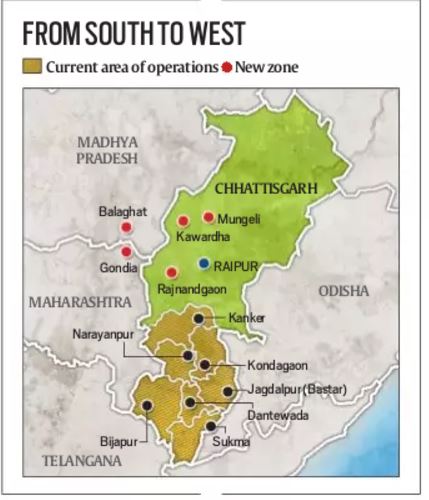900 319 0030
enquiry@shankarias.in
Why in news?
Seven Maoists were killed recently in an encounter with the Chhattisgarh Police in the Bagnadi area of Rajnandgaon district bordering.
What are the recent happenings?
What contributed to police’s success?
What are the other supporting factors?
What was the Maoists’ plan?

What are the governments’ measures?
What is the way forward?
Source: Indian Express